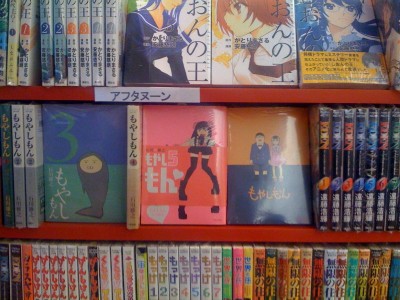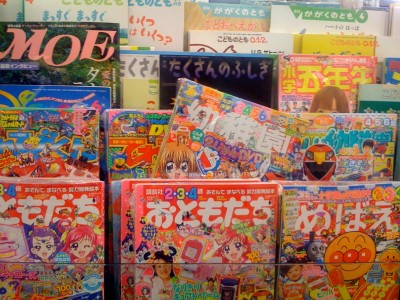What’s Killing Japanese Manga? A Lack of Discoverability.
There was a magic moment in my life when I first ventured into Japanese bookstores here in New York City. Mind you that this was many moons ago, but as an art school student I knew that shows like Star Blazers came from Japan. Not speaking Japanese the first books that caught my attention were the Roman Albums, which were (and still are) published by Tokuma Shoten. These books were miniature coffee table guides to a series, but they left me with a hunger to see the comic books that inspired these amazing animated shows. Nippon Books was a tiny store (which went out of business a quite a few years ago) so it was with a great delight that I discovered the Kinokuniya book store.
This of course was the old Kinokuniya book store which was located near Rockefeller Center. And on the second floor it was packed floor to ceiling with manga! At first I started buying manga that was just based on anime series or films that I had seen. Mind you that all of these books were in Japanese: However even if you didn’t know the language you could follow the stories based upon the illustrations. And as an art student those illustrations were quite inspirational to me in my formative years. Before long I found myself buying manga that hadn’t been made into an anime series.
What interested me is that I’d find a cover that caught my fancy and then look inside of the book. If I liked what I came across I’d purchase the volume. I should note that during this time I was in college and I didn’t have much money. So what did I do? I went on a manga diet — I’d skip lunch and buy a book. And these books were treasures to me as with the exception of one or two stores in the United States that there was no other way to get said manga. Mind you that these were the good old days before the web and resources like amazon.co.jp.
Flash ahead to the future! I find myself at the new Kinokuniya doing research on a project. Of course I can’t help myself so I had to look in the Japanese manga section. For me it’s still much more fun to look at the untranslated books as they’re the real deal. The first thing I noticed was a “no photography” sign in each aisle. This sort of surprised me because I know in Japan in some otaku bookstores they do this, but Kinokuniya seems much more mainstream than that. But what I discovered next broke my heart, and to me it spells the beginning of the end of the manga publishing business in Japan.
Every volume of manga was shrink-wrapped. I often see this where expensive art books are sold, but usually there’s one display copy that you can thumb through to see if your $50+ will be well spent. Yet there was no display copy to be found in the many aisles of Kinokuniya, and like a supermarket selling meat each and every package was “sealed for your safety”. Now I understand that there are a few crazy people with too much time who might read the entire volume in the store — or photograph it. But the side effect of this is that someone like myself can’t make a purchase from taking a quick look inside the book.
Software people have a name for this — it’s called “discoverability”. Many social media from Facebook to Flickr live and die by discoverability. It’s the idea that from a casual glance you may find something that you weren’t looking for that engages your attention. Part of what killed the music business was that outlets like radio and MTV stopped playing their product. When this occurred most people stopped discovering new artists — and the result is that the while a Lady Gaga may occur occasionally break out, for the most part you have a stagnant business in sharp decline. And what happened to music CDs is now happening to manga.
Now many folks in Japan read their manga via weekly publications, but for those who aren’t that means that there’s no reason to buy a volume of manga. So an entire market for casual readers will die out over time. Many of the artists published in the self contained volumes of manga are the best of the best, but if a few years go by their series may not be running in a weekly publication anymore. The result is that a kid discovering an older artist for the first time will be stopped dead in their tracks at the shrink-wrap. Add to that fact that Japan is graying so there are less kids to buy the older back titles in the first place. And just so you know many of the titles that were shrink-wrapped were aimed at non-otakus like kids titles and romantic girly girl manga.
Yes a hardcore otaku teenager may upload the latest Naruto to YouTube, but a kid who’s just learning to read won’t. And that kid is where the market growth will come from in the future. If that kid can’t open that manga, he or she will go and play with a videogame or do something else. Also artists who can’t make money on a back catalog may go into other fields like creating videogames where there’s more money to be made. Over the long term a lack of discoverability might produce a upcoming generation that won’t be into manga.



















